The connections between self, place, emotion and time are what fascinate textile artist Karen Henderson. Seasons, atmospheres and the time of day intrigue her. She tries to recreate these natural occurrences, evoking emotions that she associates with them through the use of color, line, and texture.
In this interview, Karen invites us into a world where there are no boundaries. She talks us through her methods and processes and we learn where her passion for art comes from, and how she creates her almost hypnotic designs.
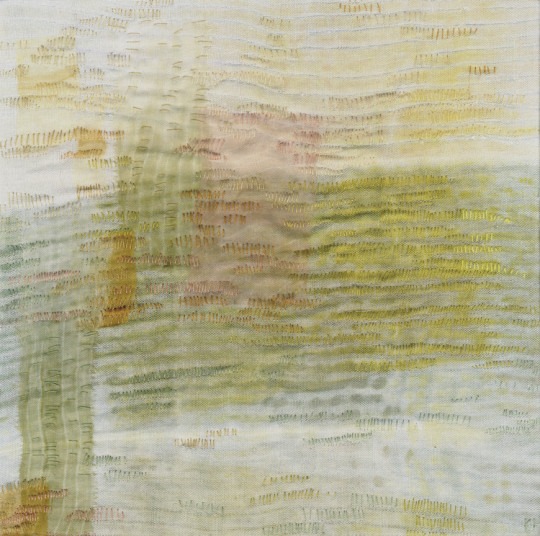
Creating a slower pace
TextileArtist.org: What initially attracted you to textiles as a medium?
Karen Henderson: My mother sewed clothing for herself, as well as for my older sister and I when we were young. She used our grandmother’s really old vintage Singer sewing machine. The gold scrollwork patterns painted on the black metal and patterns embossed in other chrome parts of the machine were just so beautiful to me. She would take us to fabric stores, which was a wonderland of colors, textures and pattern. That must be when I first fell in love with fabrics. Playing with the special tools she kept in the sewing basket, and looking at the patterns on tissue, were endlessly fascinating to me. While she never thinks of herself as an artist, for me seeing her create these things from flat fabric was a spark.
And, more specifically, how was your imagination captured by stitching?
Learning that stitching could be so much more than functional… that it can be this line – a mark of expression – was very exciting. That it could be used very literally, to draw with; and then considering how it can be used to create an atmosphere or a texture, really drew me. Plus, the rhythm of stitching is very meditative and calming. The repetitive nature of it slows down time, which is very important to me. Or maybe it’s just how I’m wired, that I need it to calm down with. Either way, when I stitch, I feel as though I am marking time. By creating a slower pace, I can be more present with my thoughts and feelings. Weaving is the same way for me. It’s like a snow-storm, the way it slows things down. I even love the sounds of these methods.
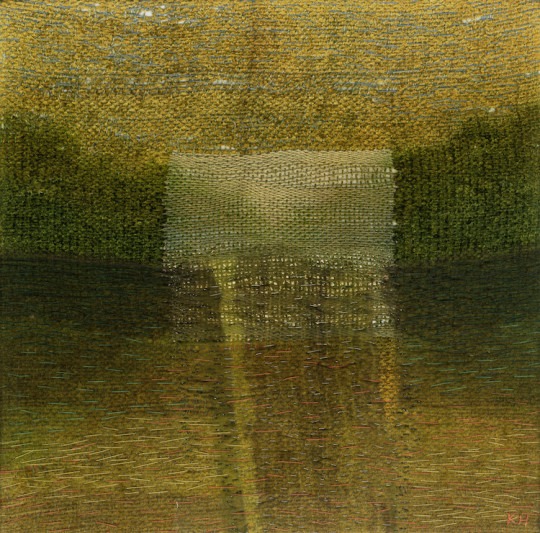
A broader world
What was your route to becoming an artist?
Even when I was really young, about maybe 4 or 5, I always knew I was an artist. It’s just what I was drawn to. When I was about 8, I wanted to be a cartoonist – because as a kid, that’s all I thought there was. As I grew up and was exposed to different types of art, I saw it was a much broader world with so much possibility. I was never without my sketchbook as a kid.
My first year of college was studying a foundation in fine arts at Pratt Institute. Then I took a few years away from a formal art program to try out many different art forms (glassblowing, ceramics, printmaking, etc) at Bucks County Community College. At the same time, I was working a lot with batik, which I’d learned in high school, and became completely addicted to that process. In taking that time to enjoy and learn many things, I was able to really know what I wanted to focus on. This led me to immerse myself in the study of Textile Design at Moore College of Art & Design in Philadelphia. It was an excellent program that prepared students for working either in industry or in the arts.
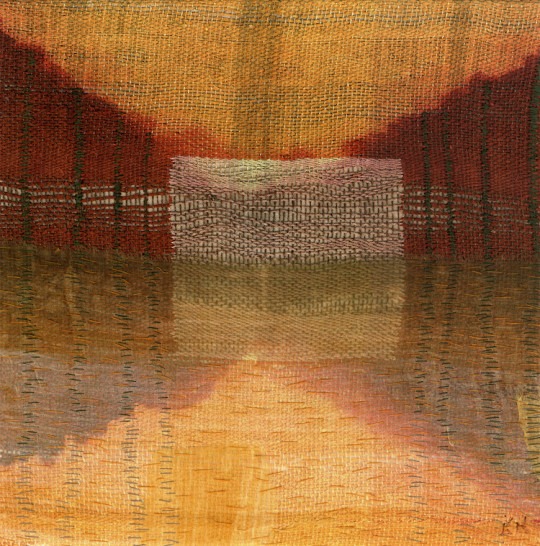
After graduating, I spent a few years working as a textile designer in the wallpaper industry, designing in repeat – which is something I still love but doesn’t find it’s way into my personal artwork. During that time with my personal art, I was working mainly with textile collage – dyeing, stitching, layering fabrics.
Then, I took an opportunity to work as the Fiber Studio Head at Peters Valley Craft School, a nonprofit organization in NJ. There, I ran two workshop studios and had access to looms again. In the non-workshop season, I was able to really dig into to my personal artwork, exploring the possibilities of weaving again, while also building my textile design freelance work for home furnishings, apparel and stationery companies. My partner, Jim, and I moved to Vermont a few years ago, where I continue to pursue my art, along with my side business and graphic design work.
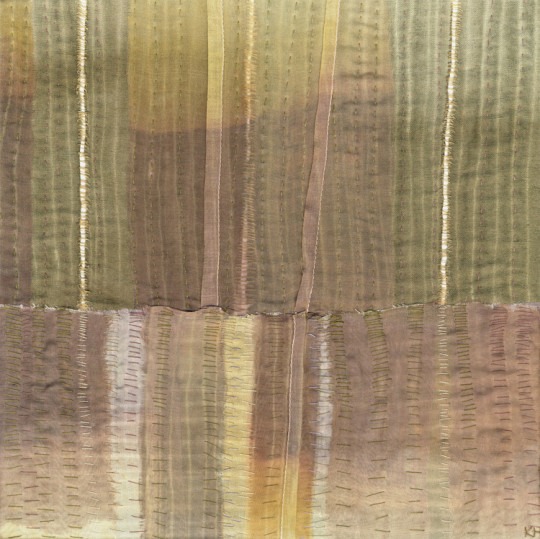
Atmospheric landscapes
Tell us a bit about your chosen techniques.
I work with my own hand woven cloth, as well as with fabrics I’ve bought. Dye techniques include shibori, batik, dye painting, gradation dyeing, as well as color removal techniques. Sometimes I incorporate rust-printing. By layering my fabrics and working with stitching for texture and details, I try to create atmospheric landscape-inspired works that explore place, memory, time and emotion.
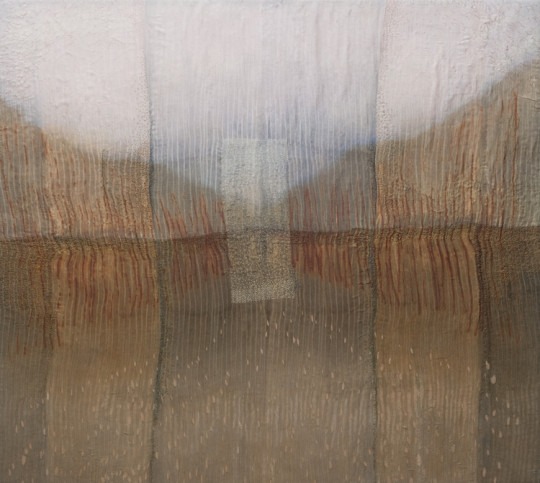
How do you use these techniques in conjunction with weaving and stitching?
When I weave, the yarns are all in their natural color – either like a neutral beige or ivory. While this doesn’t use the loom to mix color structurally, what I enjoy about this approach is the mixing of materials and exploring textures, transparency, and density in the weave.
Sometimes I incorporate a very simple tapestry technique while weaving.

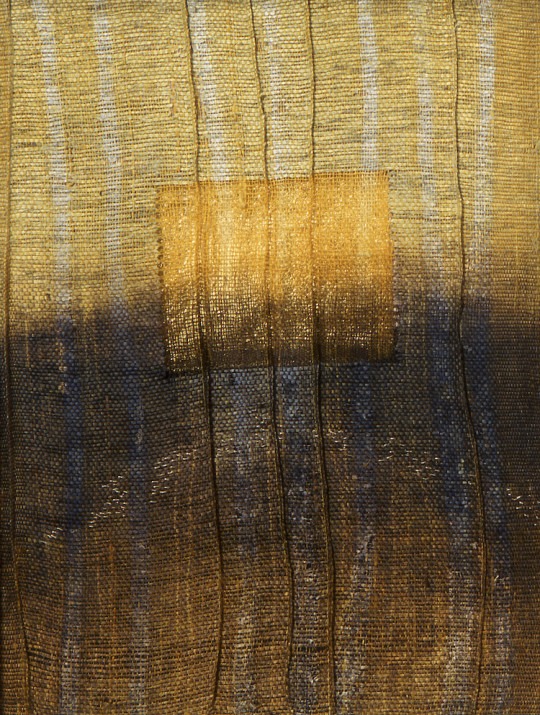
Once it’s off the loom, I begin to work with the different dye techniques. Typically I use a fine linen for my warp (the vertical threads) and mix other threads (ramie, silk, etc.) for the weft (the horizontal threads). When a linen/silk fabric is dyed, the color will take differently to each material, which can be exciting.
When I choose fabrics to layer with, if the weave is fairly open, the color of the fabric behind the weaving can affect the mood of the piece. Layering fabrics on top can also bring something different to the piece.
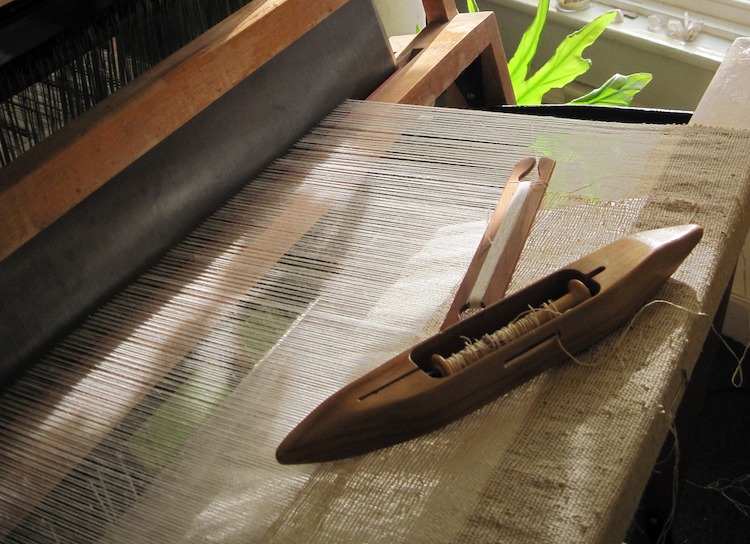
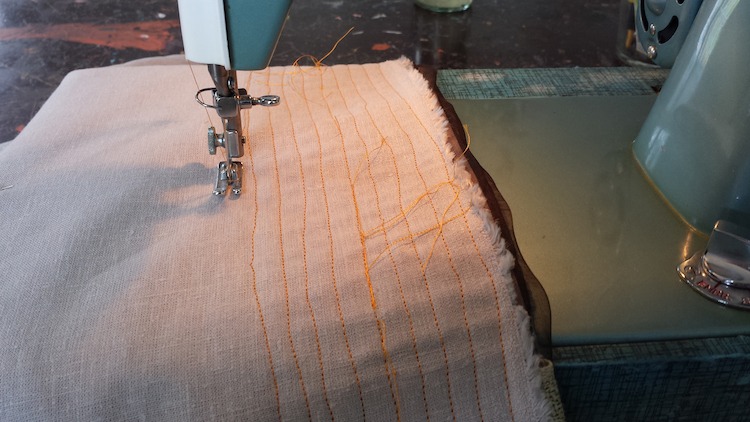
When I work with fabrics I haven’t woven, the dye processes and layering approaches are the same really. Depending on the fabric itself, I may employ other techniques to add more texture – like pulling out threads to create more openness, or using more dye techniques to give depth to the fabric.
Once I’ve decided the layers, composition, and other details, and have pinned things in place, I can then begin stitching. Sometimes that part is very minimal, and other times it’s fairly obsessive.
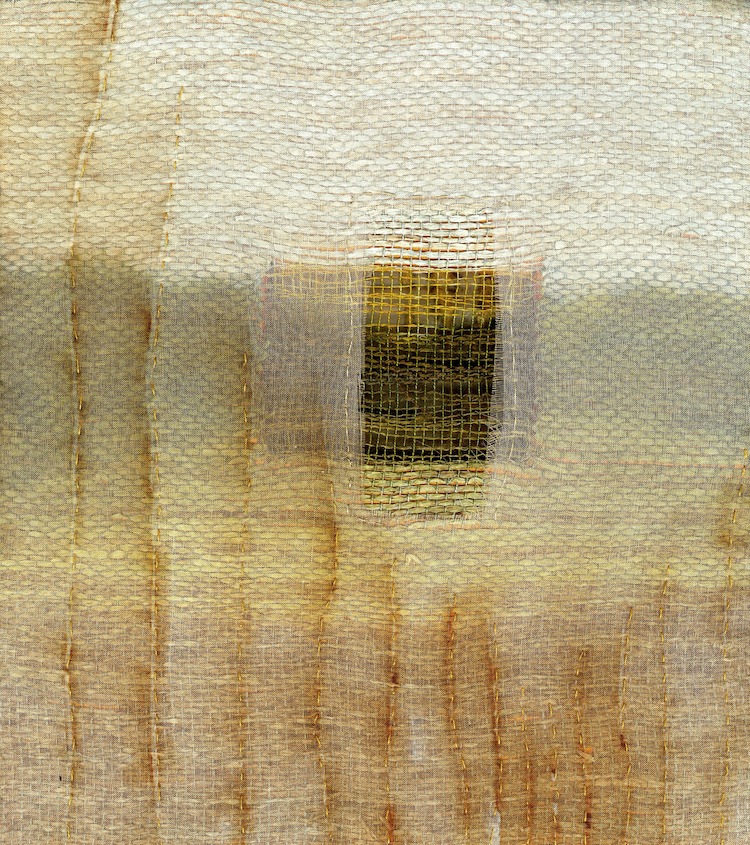
There have been a couple of times where I’ve approached even the layering and stitching parts of the process using only materials in their natural colors; first assembling everything and then dyeing/applying color to it.
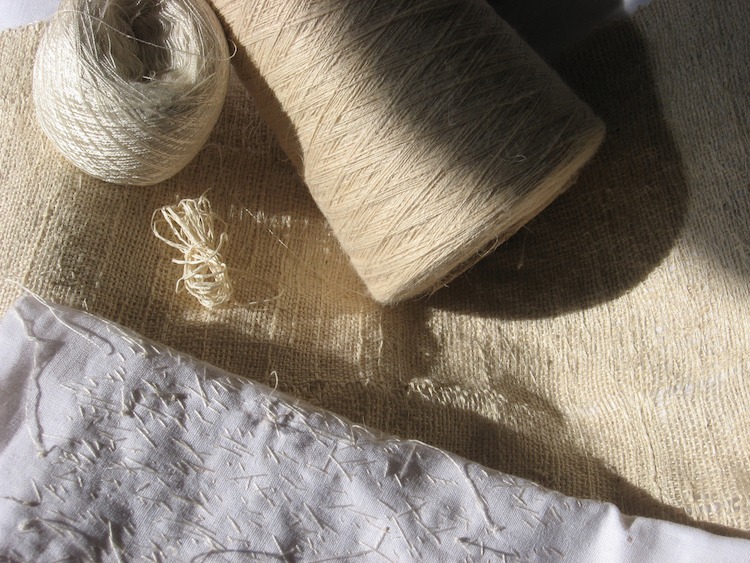
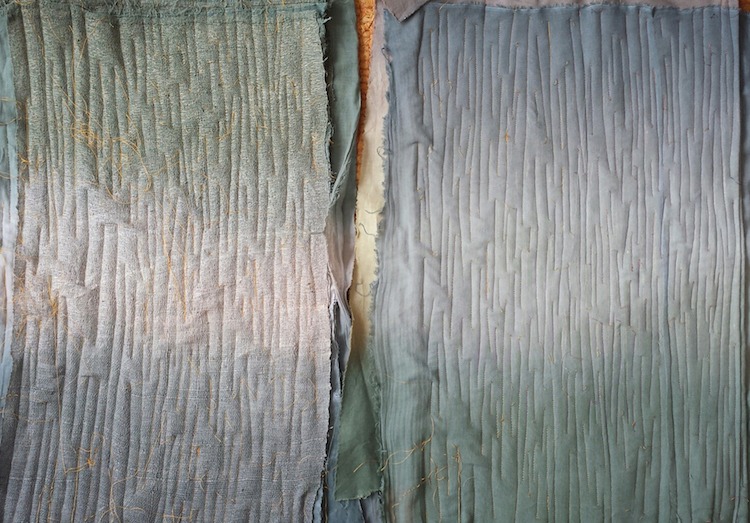
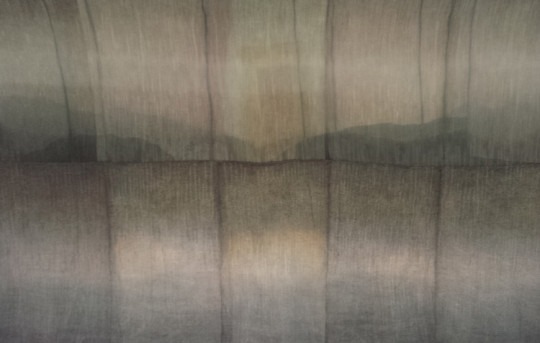
Tracking my thoughts
Do you use a sketchbook? If not, what preparatory work do you do?
Generally, I use a sketchbook more as a means of tracking my thoughts with a piece, or ideas to try on a future piece. I will tape in the yarns or fabrics I’m using on a project in the notes. My approach to color when dyeing is often just very unplanned or intuitive, but there are times when I will write down a dye recipe in my sketchbook, and do tests.
Occasionally I take my sketchbook with me on hikes. But I haven’t really drawn in a sketchbook the way I did as a young artist or even as a textile designer. It’s different now, more like simple composition sketches. Other ways I process my ideas and get inspiration are by taking photographs and using those memories as a jumping off point for a piece.
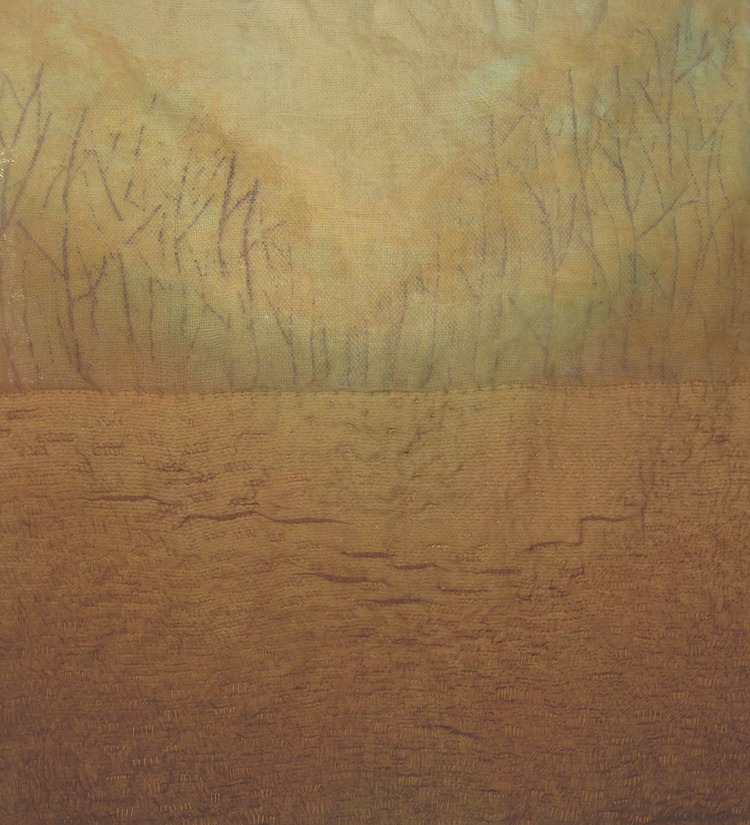
What currently inspires you?
Themes that I revisit often in my work are trees/paths and water/ reflection. Lately, there are several pieces in various stages that are also inspired by either rain, fog, light (or all three) and all have associations with memory. Also, recently Japanese Boro Cloth (clothes or household items that were repaired over and over again) has been in my thoughts because one of my fabrics that I’ve been dying seems to have a very vintage / aged quality to it, which brought to mind this fabric. I’m intrigued that cloth can become these time capsules in a way, sharing stories, history, or emotion through wear and tear, and stitched marks in the fabric.
So while I’m not creating things from beloved family garments, I do relate or feel inspired by the thought that the stitch becomes that mark of time, over long periods of time, to create something totally different from its beginnings.
Who have been your major influences and why?
My professors at Moore College of Art & Design; Deborah Warner, Michael Olszewski and Lewis Knauss; have been big influences on me. Each of their art explores emotion, relationship, and/or place; which I respond to very much. They all shared a strong dedication to their own art practice – which is the best example for a young artist to be exposed to. Each of them has also been supportive to me as mentors in the many years since graduating while I continued to pursue my work and navigate different parts of the art and design world. I feel incredibly fortunate to have learned from them. Deborah passed away some years ago, which is a great loss to everyone who knew her.
Other fiber artists whose work I am drawn to are Dorothy Caldwell, for her mark making with stitch and batik, and for her reference to place; Wen Redmond for the feeling of memory and atmosphere in her work; and Polly Barton for her approach to both weaving and drawing. Also, many Impressionist painters (including William Lathrop and James Whistler’s nocturnes), for their practice of capturing a fleeting moment in landscape.
How has your work developed since you began and how do you see it evolving in the future?
With landscape as a reference point, there are times when my work shifts between being either more representational or being more abstract.
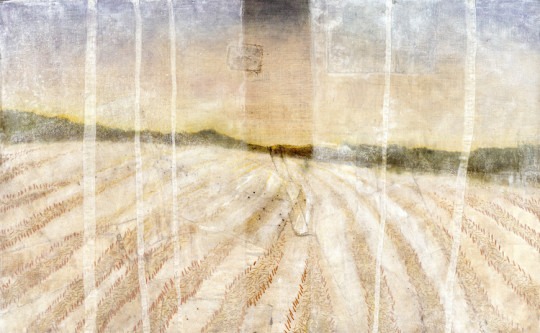
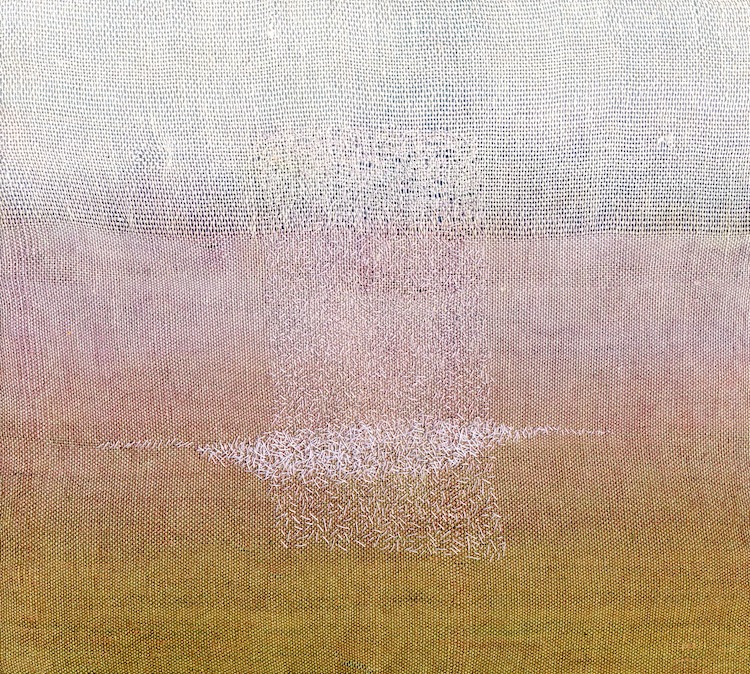
Lately, I’ve been experimenting a bit with more mixed media techniques like textured acrylics, inks, and mono-prints. I am combining them with my textile techniques and am exploring different ways to bring these approaches together. It’s still in a very new stage, but I’m excited by the direction, and will continue to spend some of my time developing this work while I still pursue my all-textile pieces.
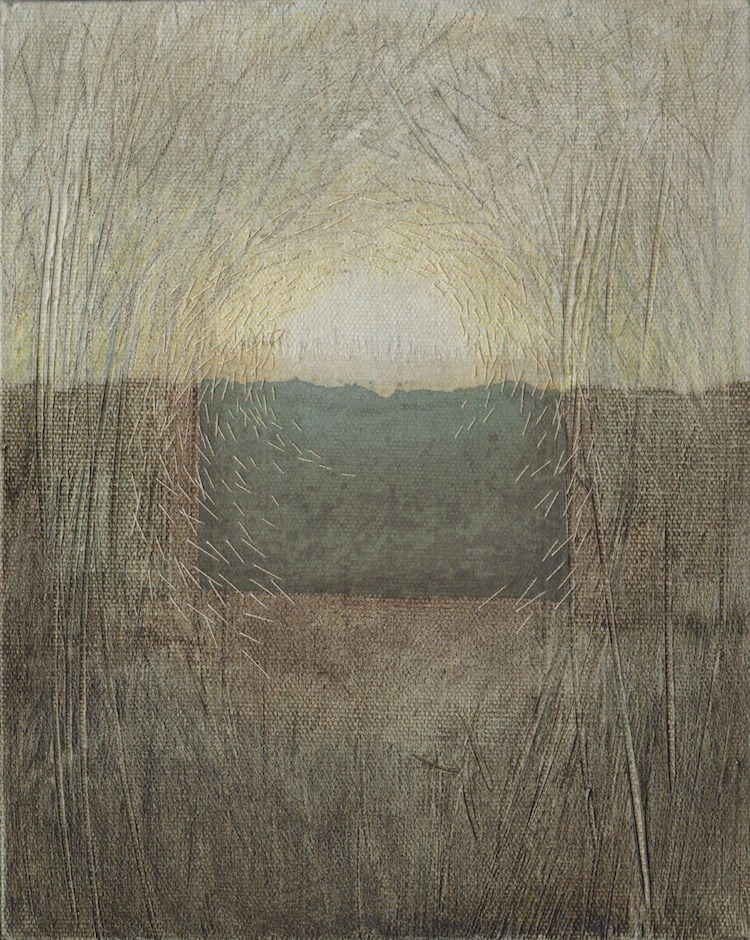
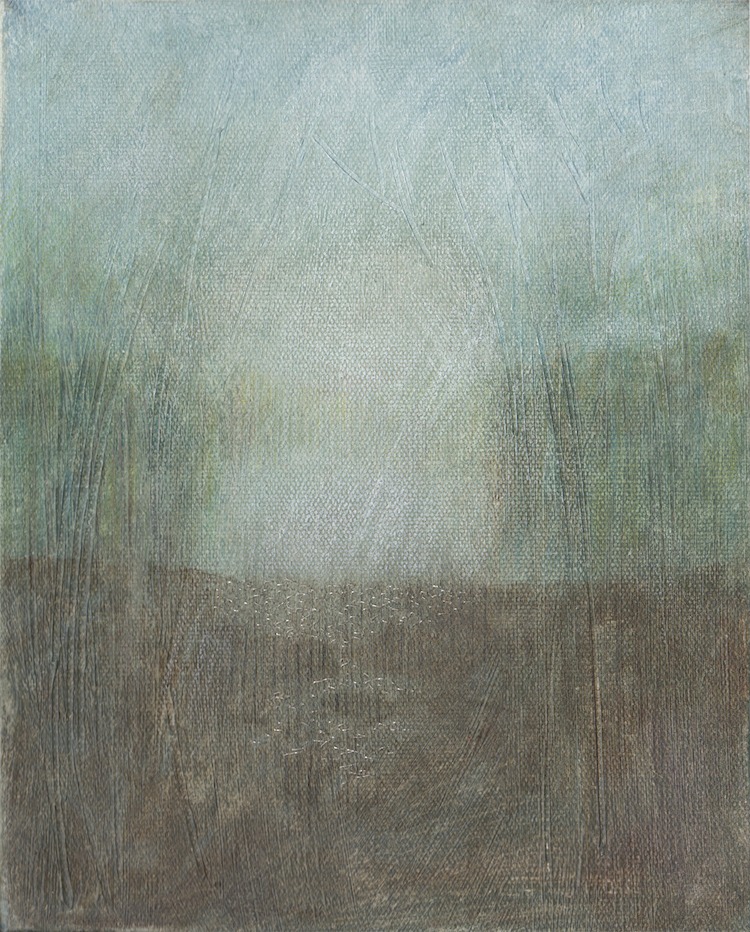
In the past six months I was able to participate in two different Artist Residencies; one at Marble House Project, and the other at Vermont Studio Center. These opportunities have been extremely important to my development; giving me focused time and space to work with my new ideas within a community of talented, diverse and committed artists.
Another aspect were the lectures, events and visiting artists to receive critique from, which were all beneficial. It surprised me by how much I could accomplish in just two or three weeks; but then again it’s not surprising at all – such environments are designed to be extremely conducive for artistic engagement, growth, and productivity. My hope is to be able to do more of these types of residencies in the future, to widen my views and experiences.
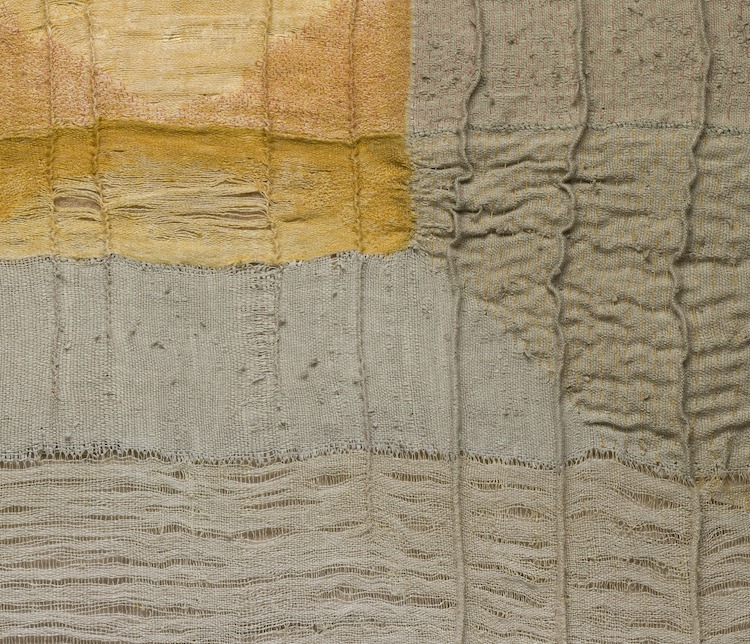
What other resources do you use? Blogs, websites, magazines etc.
There’s certainly a lot available, and I can’t think of all of them at the moment…Regularly I turn to The Surface Design Association Journal, Fiber Art Now, American Craft, and sometimes I find Blogs that I’ll bookmark so I can try to remember to visit again.
What piece of equipment or tool could you not live without?
Scissors. Sewing needles. Loom. Sewing machine. And now, apparently I need my reading glasses to see better so I can thread the darn needle! And a camera…and computer so I can try to share my work with others digitally…. Was I supposed to pick just one?
Do you give talks or run workshops or classes?
In the past, I’ve given talks or done small workshops. When things come up, I would list them on the News & Events page on my website.
Where can readers see your work this year?
Later this year, my work will be part of an exhibit titled “A Journey Without Boundaries” which will be held at The Chandler Gallery in Randolph, VT. It is being curated by two artists, Gowri Savoor and Angelo Arnold. Also, other work will be included in shows organized by the Vermont members of the Surface Design Association.
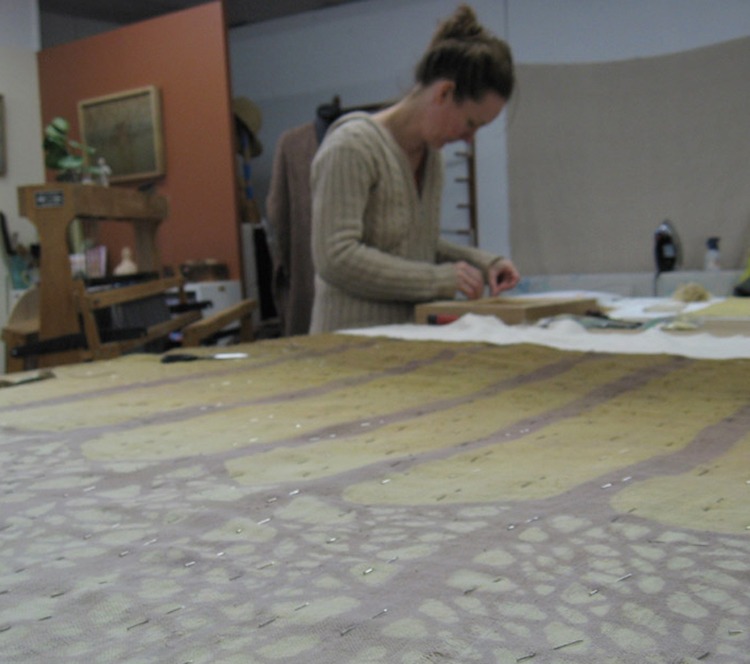
For more information visit: www.karenhendersonfiber.com
Let your friends know about this artist’s work by sharing the article on social media. It’s easy – click on the buttons below!
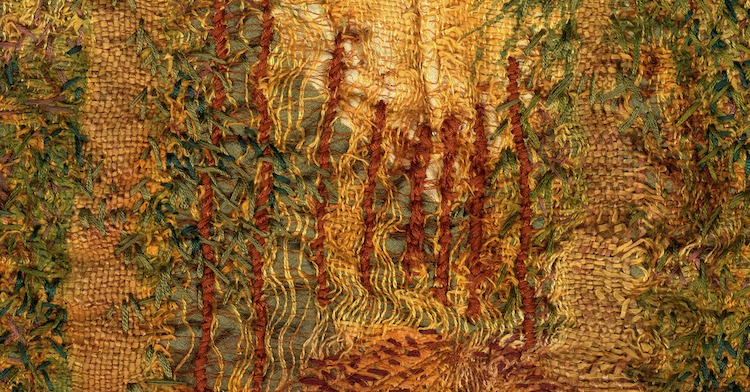

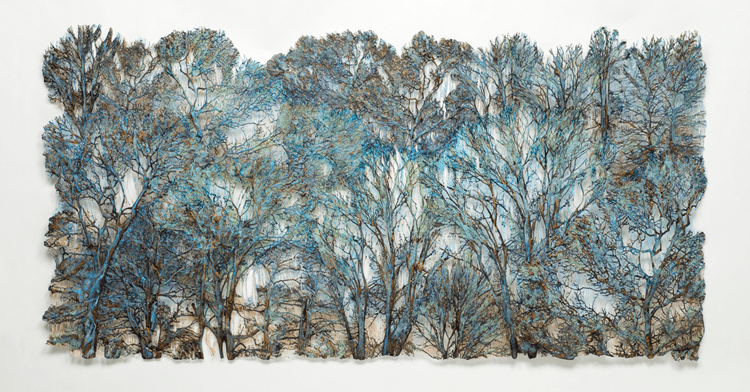
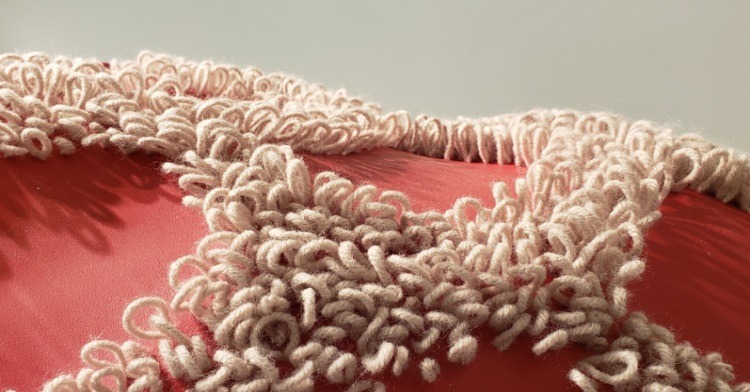
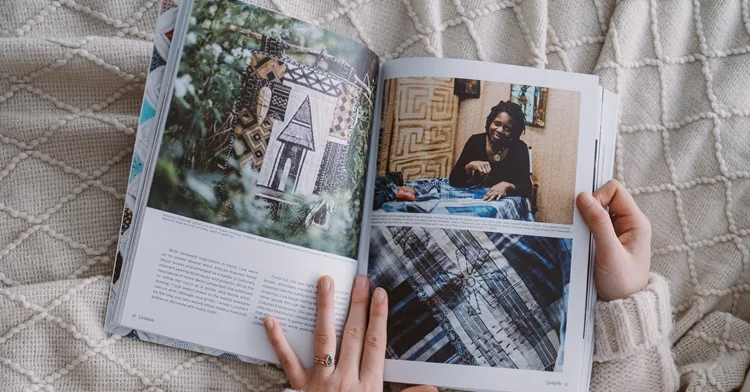
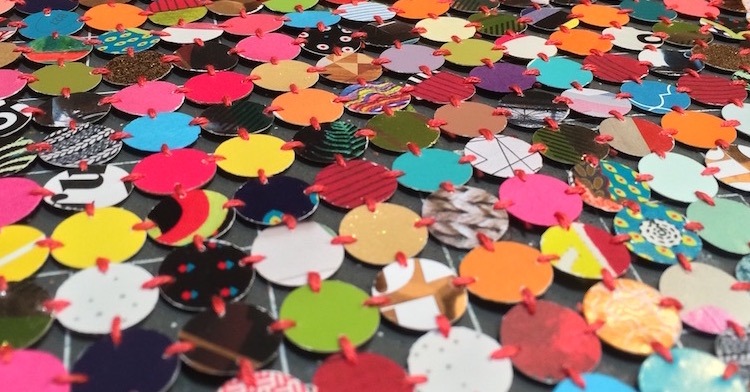
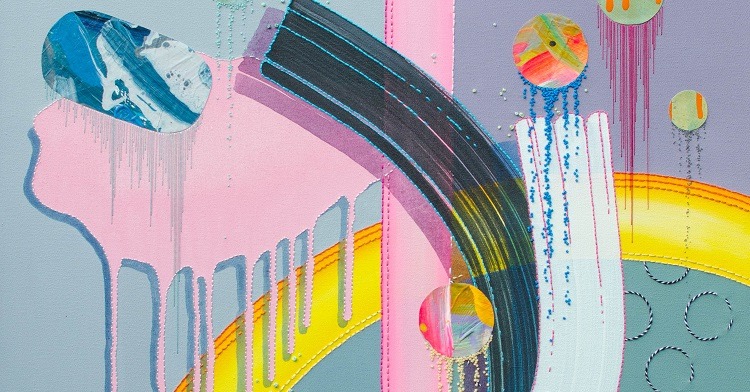
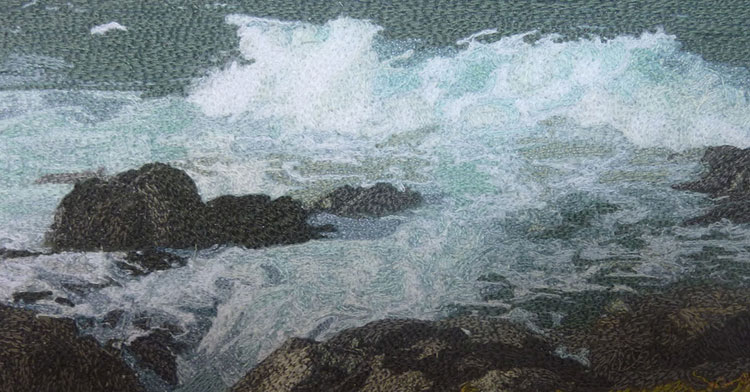
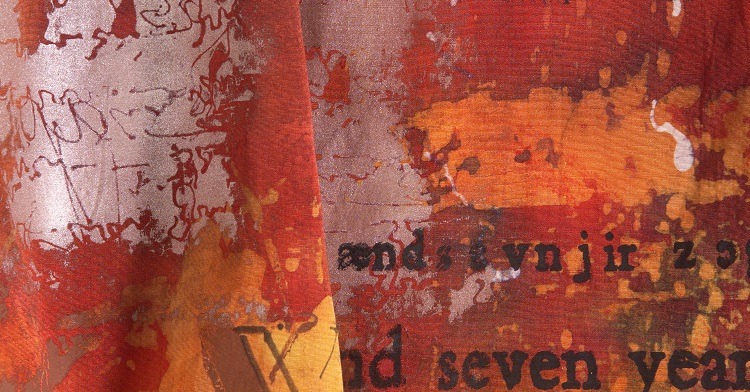
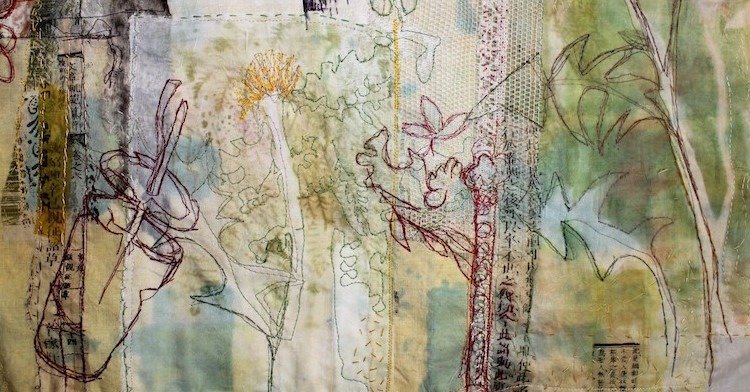
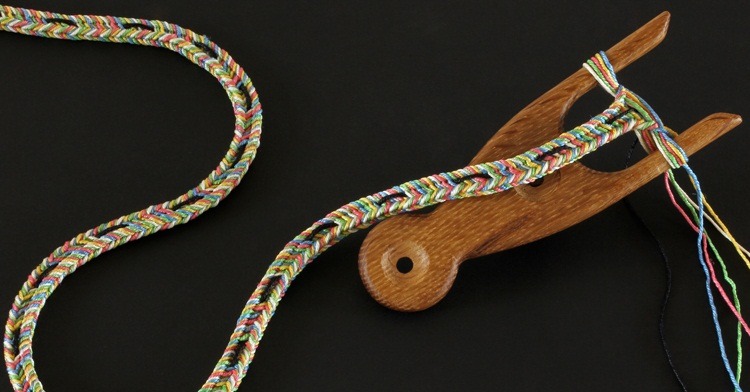
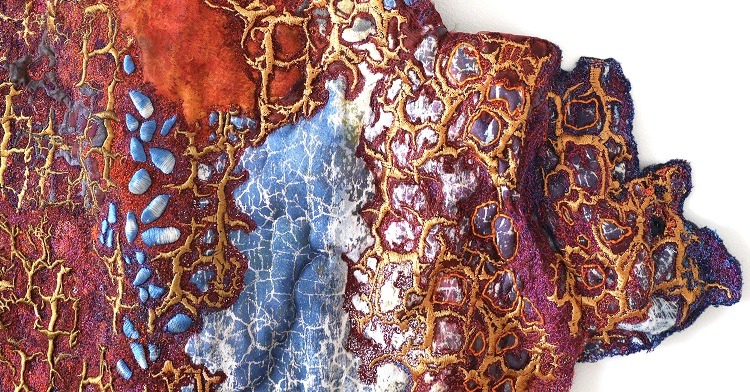
7 comments
Margot
Amazing work and article with great links to other wonderful, inspiring designers, thank you
Alison Harper
A really good source of inspiration and ideas, keeping us in touch with other
textile artists/designers. Also a good resource for teachers/students and their learning/teaching.
Lulu Moonwood Murakami
To Karen – Congratulations on so beautifully accomplishing your goal of capturing the atmospheric landscape/memory! Gorgeous work! To Sam and Joe – thank you so much for providing such thoughtful articles in The Textile Artist! I feel as if I’m part of a scholarly art group once again!
Daniel
Hi Lulu, What wonderful compliments! Thank you so much. We really appreciate you taking the time to write to us. Enjoy!
Jo
I enjoyed this article very much. Vermont is a treasure trove of wonderful places to visit. Randolph and the Chandler Gallery is now on my radar! Having family in the state makes us a yearly visitor but I can not wait until the time when I can go for longer periods to explore all the venues I have heard about but can’t get to with a few days visit.
Karen’s work and materials she uses are very intriguing. I love the ethereal quality of her work.
These glimpses into artists and the work each week are a highlight of my week.
Julie Shackson
Wonderful article! I love the way she achieves atmospheric compositions with various materials and techniques. And every one is related, but they are so different to each other. Thank you!
Ellen Cunningham
Love the delicate abstract landscapes and the integration with weave-very atmospheric work-like delicate dreams.